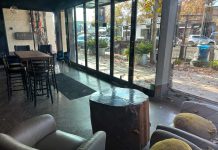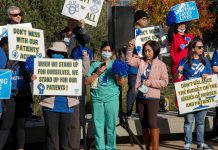GILROY
– Hundreds of victims of the Croy Fire have learned the hard way
that ditching the freeways and strip malls of the Silicon Valley
for the simple serenity of the Santa Cruz Mountains isn’t so easy
to do these days.
GILROY – Hundreds of victims of the Croy Fire have learned the hard way that ditching the freeways and strip malls of the Silicon Valley for the simple serenity of the Santa Cruz Mountains isn’t so easy to do these days.
Sure, they were aware of the likelihood of wildfires, the treacherous muddy roads in the winter and the isolation from emergency medical facilities. But what they weren’t prepared for was the challenge of meeting county permit expectations that seemed, and still seem, insurmountable.
Following South County’s largest fire in nearly 20 years, county officials were shocked to learn that only two of the 100 structures affected by the Croy Fire were permitted by the county, according to Rachael Gibson, County District 1 Supervisor Don Gage’s land-use policy aide, who called the low number “appalling.”
But area residents said county roadblocks prevented them from obtaining permits before the fire. And now, with many of the Croy victims struggling to rebuild their homes and their lives, the barrier separating them from the county is even thicker, delaying the permitting process of homes in the area indefinitely.
“I’ve dealt with the county steadily over the past 20 years, and what I can tell you now is that there is a broad bias against people who choose to live in the hills,” said Roy Guist, who lost his home and had much of his 47 acres of land destroyed in the 3,127-acre Croy Fire. “They tell you you need a permit for this and that, and then you apply, but they deny it because something else isn’t up to code. Then when you come back, they hit you with something else. … The county is holding us to flatland standards, and in many cases that is just not feasible.”
Guist, a former NASA engineer, moved to with his wife Susan to their longtime property in the 7900 block of Croy Road following his 1995 retirement. He estimates his losses from the fire at $750,000, most of which will be repaid by insurance.
And like the vast majority of the victims of the Croy Fire, Guist’s home was not permitted by the county, meaning he is ineligible for many of the county, state and federal assistance programs made available to natural disaster victims. But it’s not that he didn’t try to get the permit.
Guist estimates he made at least five attempts to obtain site approval and building permits for his home since he moved there permanently in 1995. But Guist’s requests were denied, and county planners gave him the same reason they gave nearly 30 of his Croy Road neighbors, stating their four-mile stretch of Croy Road did not meet county standards.
Since the Croy Fire, Guist and several of his neighbors wanting to rebuild what they lost in the blaze have applied for rebuilding permits, and, again, with no approval.
“The main issue here is the road,” said Pamela Wu, the county planner handling the permit requests for many of the Croy Fire victims. “The road does not meet our standards, and it makes it difficult for us to ensure fire protection in a timely manner.”
County code requires all county roads be asphalt, and a minimum of 18 feet wide, with three foot shoulders. Parts of the 7900 block of Croy Road are only 10 feet wide, with barely any shoulder. The steep slope of the road and the lack of turning radius on some bends also fall below county standards.
California Department of Forestry and Fire Protection engines and water tenders were able to handle the majority of Croy Road during September’s fire, but the county is still demanding the road be brought up to code before they issue any building permits in the area.
Fixing the road would cost the residents of the area millions of dollars, although the environmental impacts from grading the slope of the road could mean the project might never even get started, Guist said.
During the last few years, Guist himself put $500,000 toward improving the one-mile stretch of the 7900 block of Croy Road near his home. He also organized neighbors in 2001 to raise $50,000 to rebuild a bridge leading to their neighborhood that had previously been “red tagged” by the county as unsafe.
“The county says the victims of the Croy Fire who did not have permits do not have rights,” Guist said. “But it’s not that we didn’t try to get permits and make the improvements, it’s that the county policy is made for the flatlands and not up here. I’ve had my check signed and ready to pay for my permits, but they don’t want it, they don’t want to be responsible.”
Guist has met with Wu, Gibson and other county officials several times since the Croy Fire in an effort to work out a compromise to the Croy Road improvement requirements, but he said the county has not budged. He is currently organizing some of his more affluent neighbors to raise the hundreds of thousands of dollars it will cost them to hire an engineer just to scout the road for improvement, but he isn’t too optimistic about the future.
“Most of the people who live around here know and love these hills, and we meet all the fire codes,” Guist said. “We are willing to put money into this road, but the way the county wants to do it, it will never happen. At some point a policy has to be able to be changed.”
County officials say they will maintain their policy responding to unpermitted homes only when reported, and will not actively seek unpermitted homes in any area of the county.
“We would like to keep a closer tab on the unpermitted homes, but we simply don’t have the manpower,” Gibson said. “The ordinance requiring permits is in place in order to prevent the type of disaster that happened on Croy Road, and was caused by an illegal dwelling. This is a regrettable situation, but it will have to be dealt with some time.”













